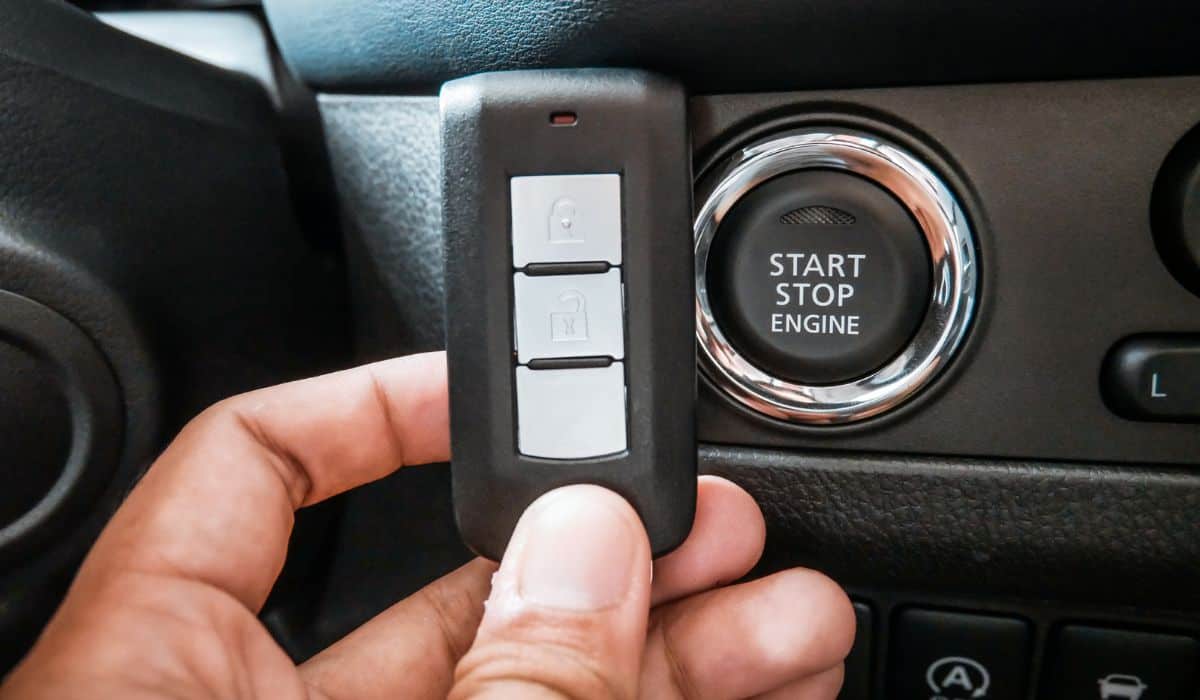Remote Start And Engine Misfire: Could There Be A Connection?
Remote start is a convenient feature that makes it much easier to get into your car on scorching hot days and freezing mornings. But the system is complicated, and it connects to several components in the ignition. So, if your engine is misfiring, could it be linked to the remote start feature?
Remote start doesn’t cause misfires, since the remote start system doesn’t actually affect how your engine starts, runs, or misfires. Engine misfires are typically caused by faulty spark plugs, malfunctioning ignition coils, and mechanical problems.
If your car is on the fritz after you push the remote start button, there’s no need to panic. Acting fast is crucial, but there’s a lot to keep in mind, and you should consider the situation carefully. Let’s take a look at everything you need to know to get started below.
How Does Remote Start Work?

The remote start seems relatively simple — you press a button, the car starts, and it’ll be warm in the winter and cold in the summer, right? As you can imagine, this explanation doesn’t exactly paint the whole picture.
The ignition system is complex, with several components involved — like the ignition switch and power wire. When you push the remote start button on your key fob, a signal is sent to all of these components. The ignition system and switches start the engine as well as the heating and cooling systems, as well as other electronic parts.
But even though the car is running, it won’t move or function until you actually insert the key. So, how does all of this work?
The Different Components of a Remote Start System
Remote engine start (RES) systems have two primary components:
- Remote Starter: The remote starter is a tiny device that’s installed in the vehicle. It connects to the ignition switch alongside the power, ignition, starter, brake, ground, and tachometer wires. The remote starter must join all of these components to work correctly.
- Transmitter: The transmitter is what you use to activate the system. It’s typically a key fob similar to standard key fobs with alarms and lock/unlock buttons. Basic units have a simple switch, while advanced systems can control other components.
The distance from which you can use a RES varies, but it’s typically between 500 and 1,000 feet from the vehicle. Advanced models have much longer ranges, such as 1,500–3,000 feet.
Other units have two-way communication so that you can adjust the situation inside of the vehicle, like the heat, radio, and windows. Other remote start systems are compatible with mobile apps, providing additional range and information about the car.
What Is an Engine Misfire?
Car engines need fuel, oxygen, and a spark to fire the cylinders. The engine requires fuel to burn, oxygen to help the burn reaction, and a spark to continue the process. The cylinders won’t combust if any of these components are missing.
Cylinder combustions that don’t work properly are known as engine misfires.
Misfires can happen when you start the engine or while the car is idling. When it occurs, you might lose speed, and the engine can stutter. In most cases, the engine will regain normal speed after a few moments. That said, misfires are a sign that something is wrong, and they’re likely to happen multiple times.
Misfires also place additional strain on your vehicle’s engine. Several misfires can damage different engine parts and lead to the need for expensive repairs.
Could Remote Start Cause an Engine Misfire?
Fortunately, remote start can’t cause an engine to misfire. The system doesn’t have an effect on how your engine starts, runs, or misfires. Misfires happen due to issues with the internal combustion process.
Other Common Causes of Engine Misfires
If remote start doesn’t cause an engine to misfire, what does? The most common culprits behind misfires are faulty spark plugs, malfunctioning ignition coils, and mechanical problems. Let’s take a deeper look below.
Problems With the Spark Plugs

Spark plugs are a common cause of a misfiring engine. The spark plugs are tiny components in the engine that ignite and start the combustion process. Damaged and poor installation can lead to misfires.
Luckily, spark plugs are relatively affordable, and you can typically change them by hand. That said, it’s essential to make sure the ignition wires connected to the spark plugs aren’t damaged or worn. The ignition wires will need to be replaced if they’re in poor condition. If your spark plugs simply need a good cleaning, click here.
Issues With the Fuel System
The fuel system can also cause misfires. For instance, clogged fuel filters can prevent enough fuel from reaching the cylinder. In other situations, the fuel cylinders are dirty and less efficient.
Fuel-related misfires are more likely to occur suddenly during idling instead of while driving at normal speeds.
Flaws With Mechanical Components
Mechanical misfires are typically more complex and severe. In some cases, the timing belts or chains can slip and affect the combustion process. Mechanical problems like a damaged valve train or vacuum line can also cause issues.
It’s crucial to address mechanical misfires as soon as possible, as they’ll continue to get worse over time. If they’re not handled promptly, your vehicle may become damaged, and you’ll have to pay expensive repair fees.
